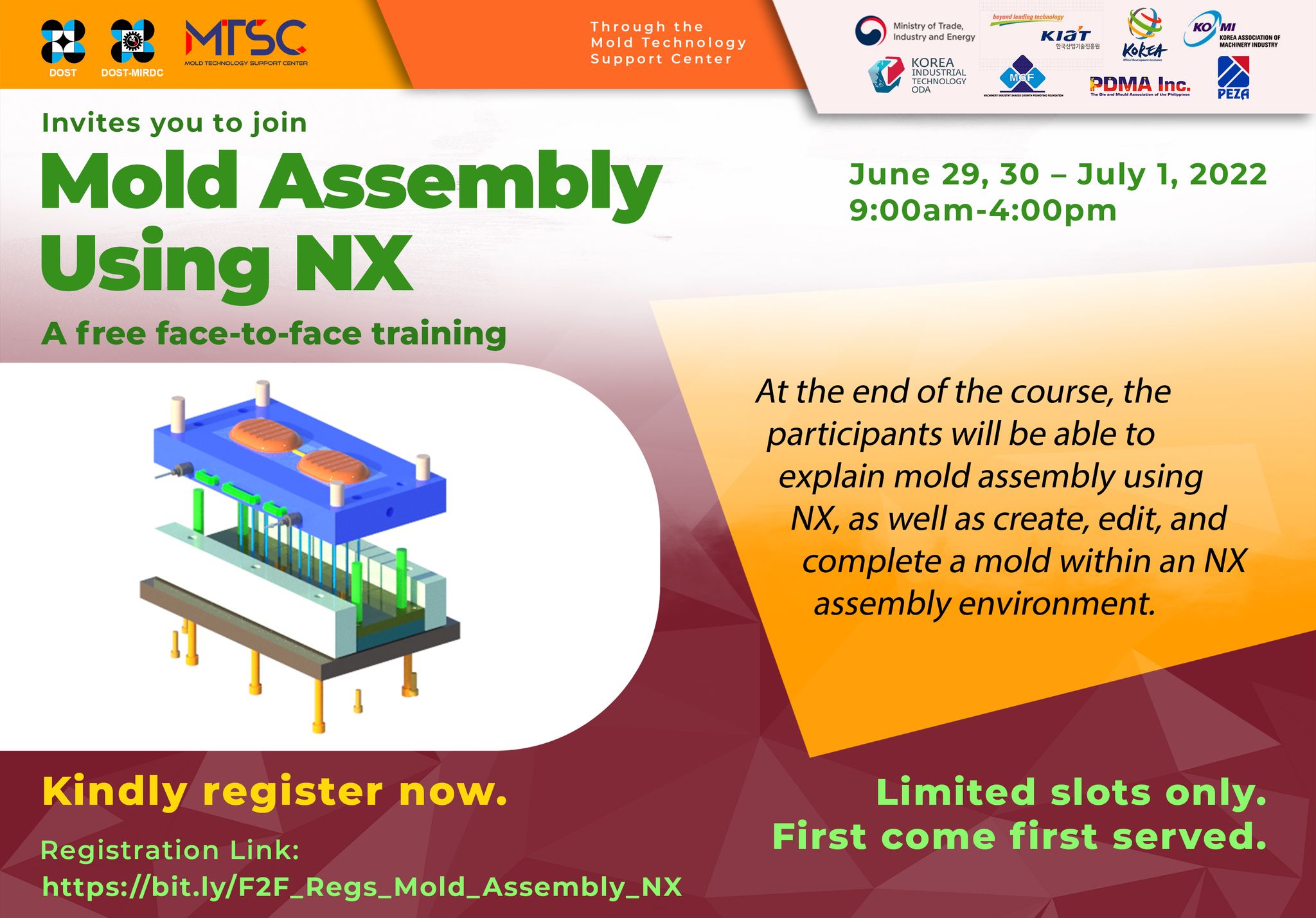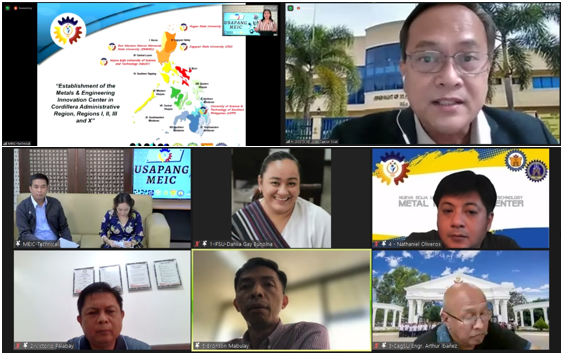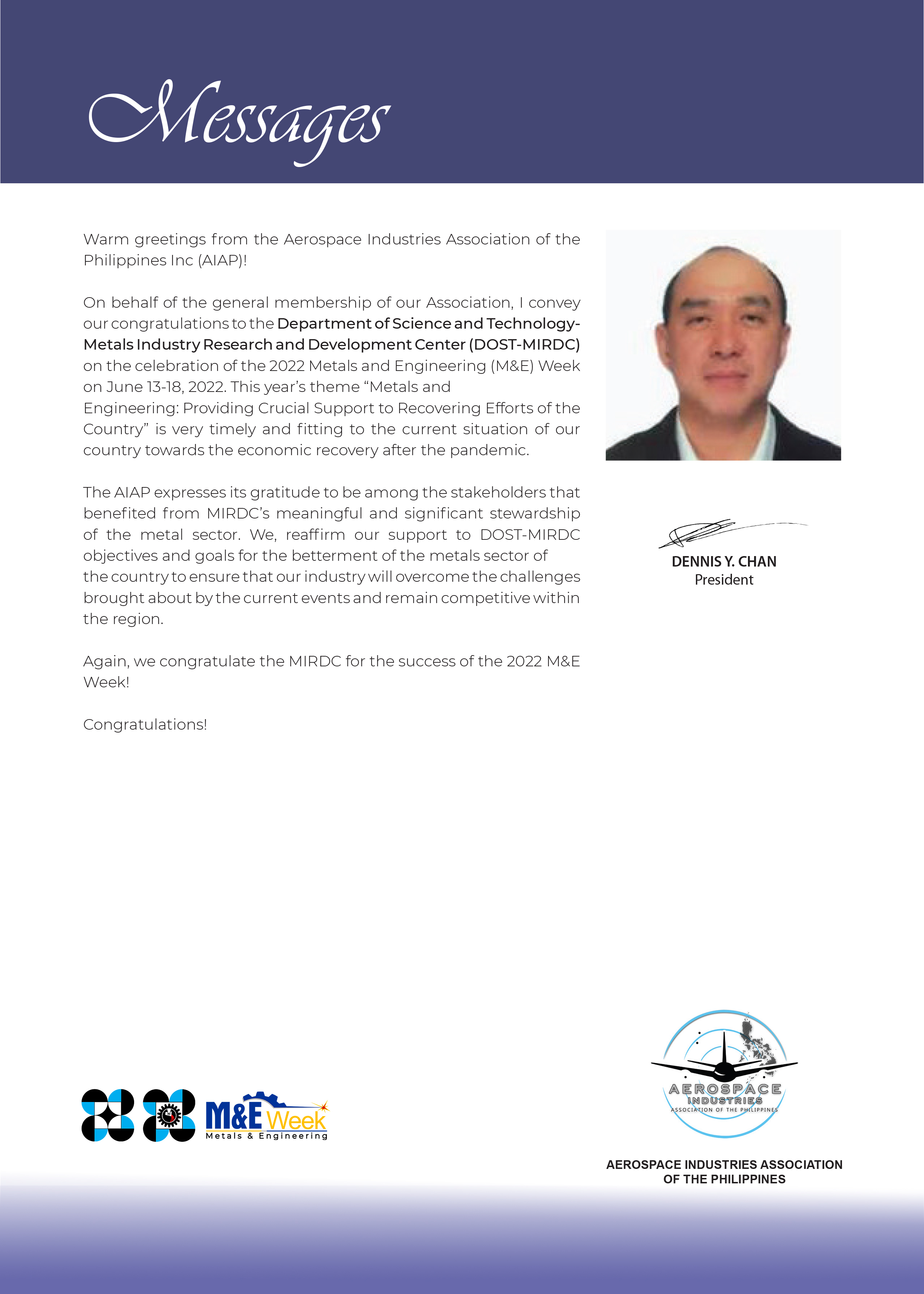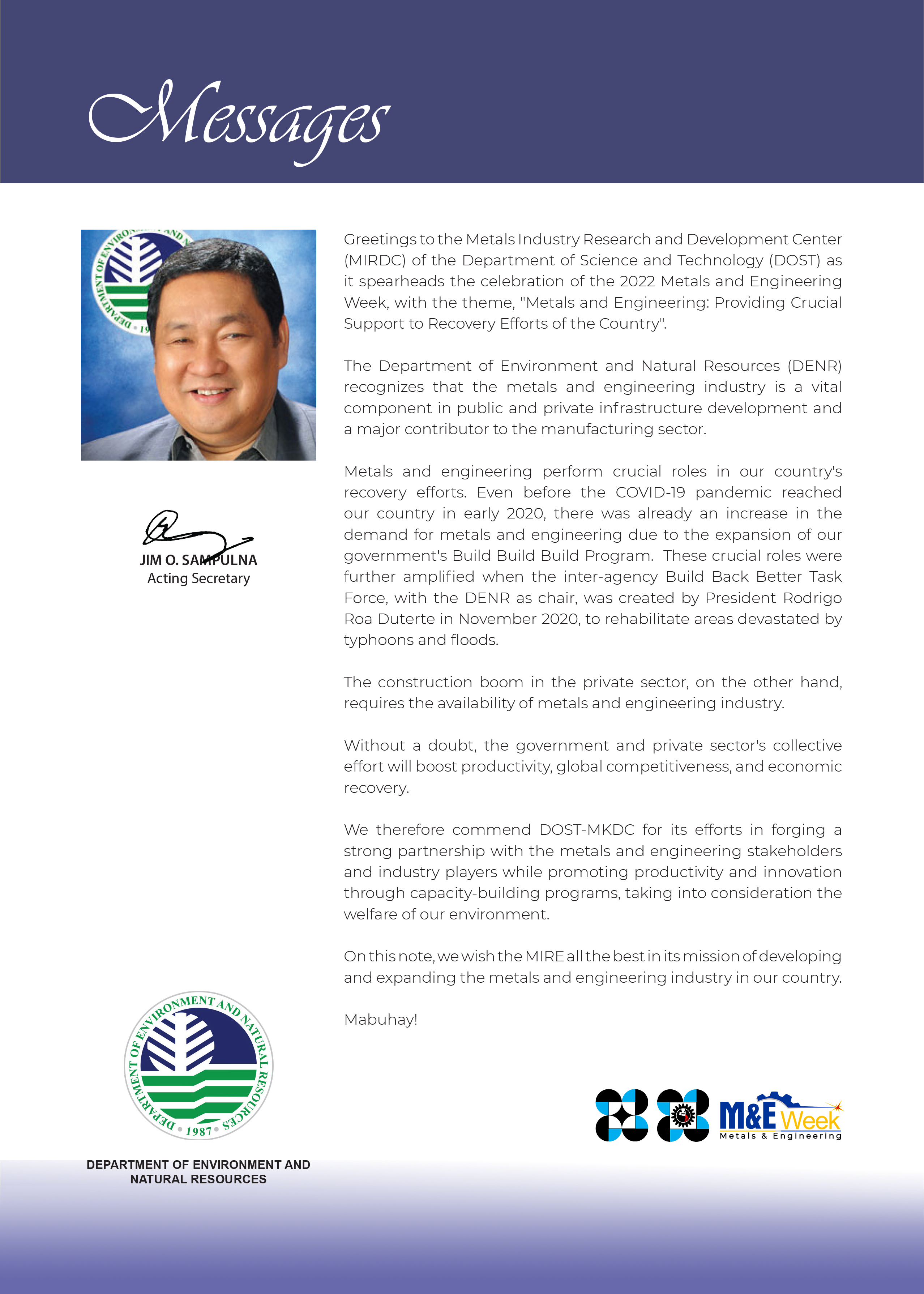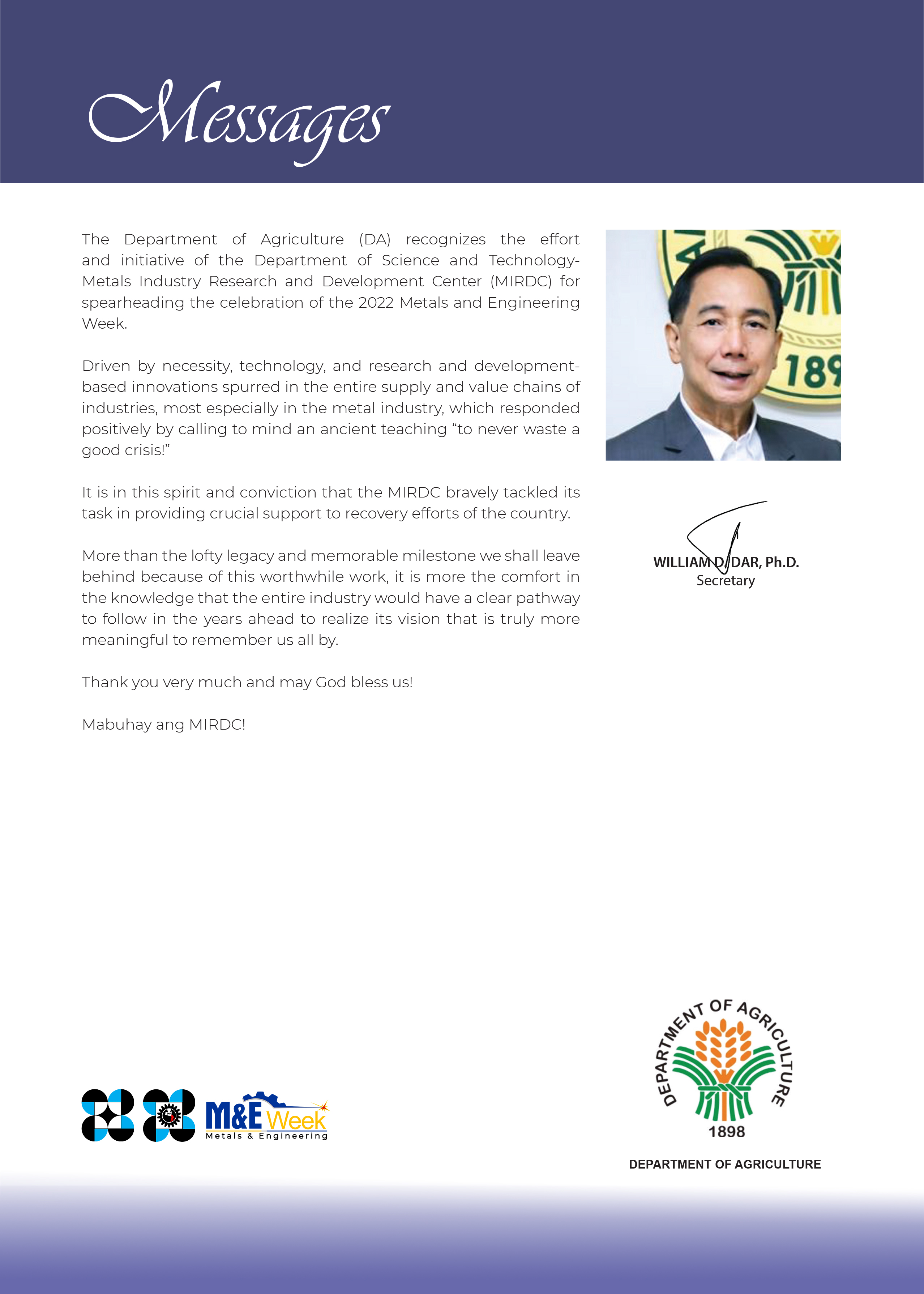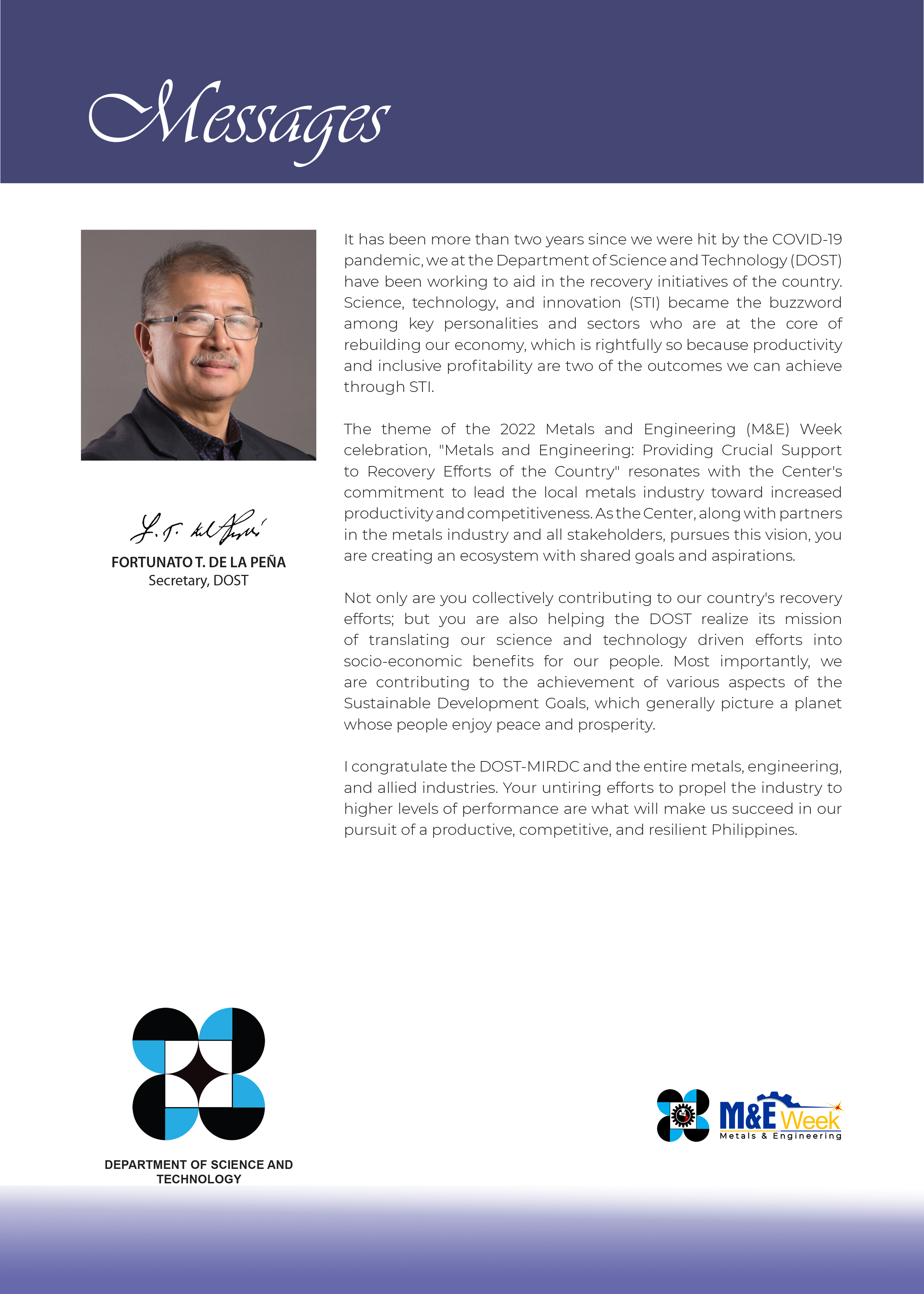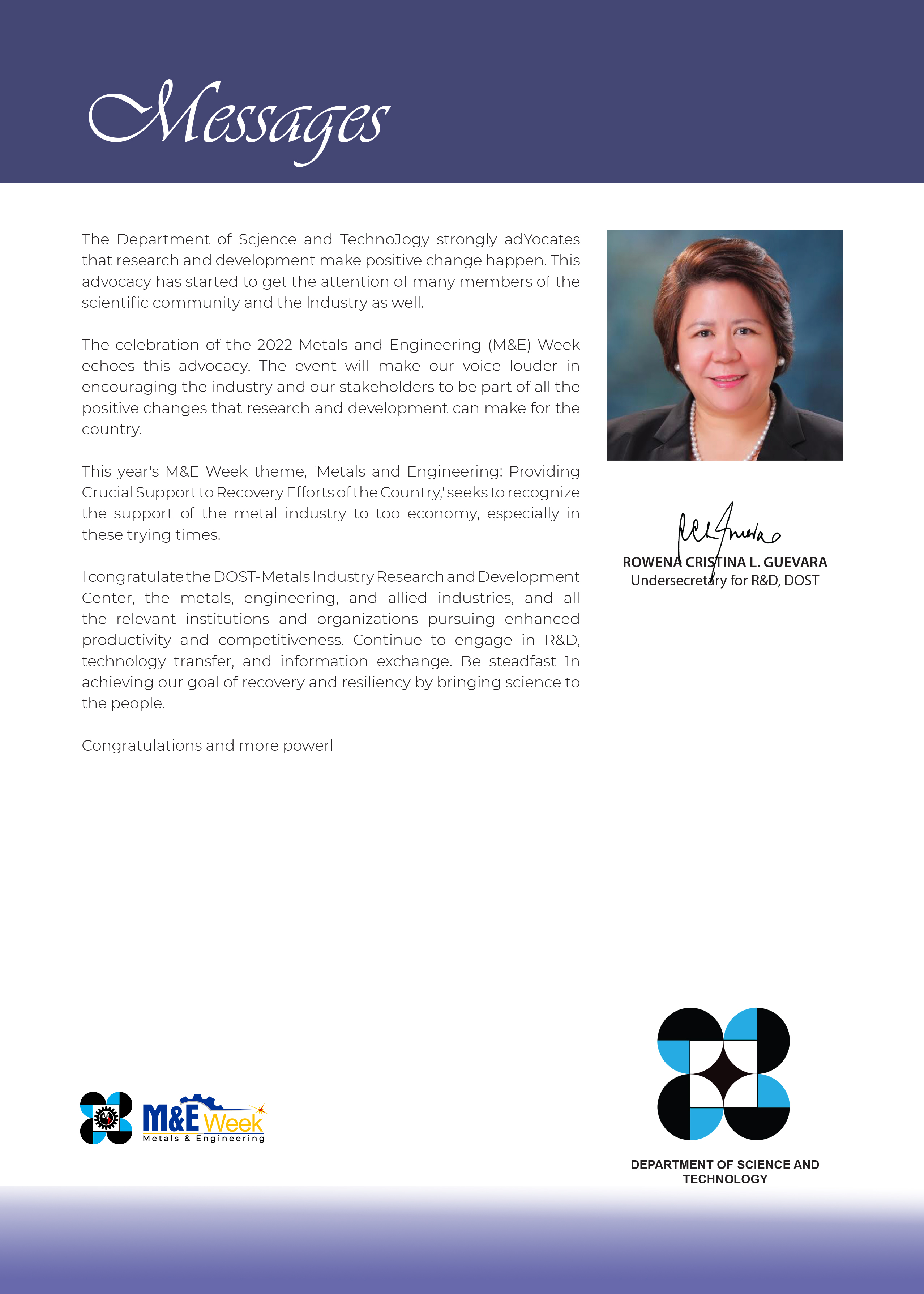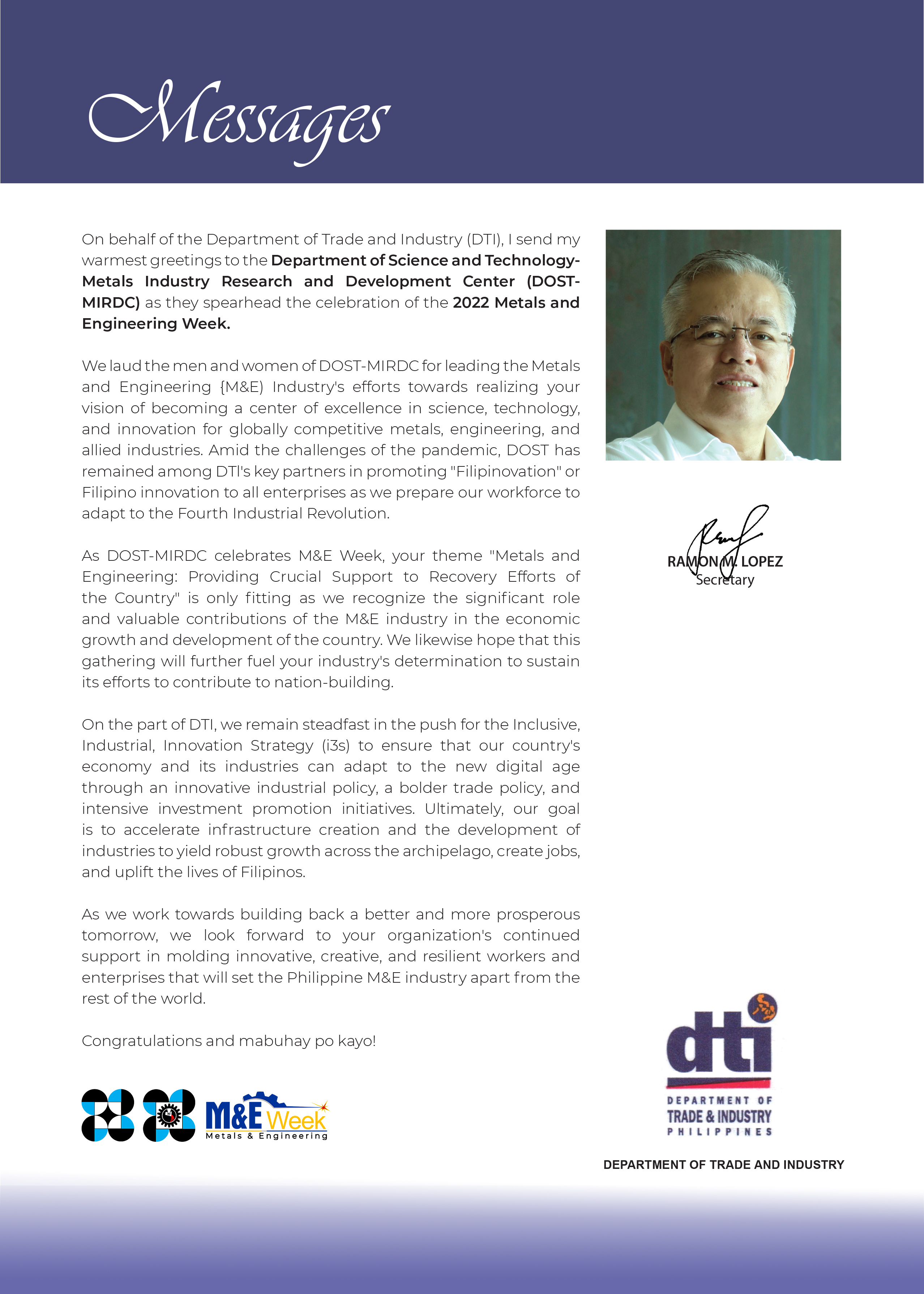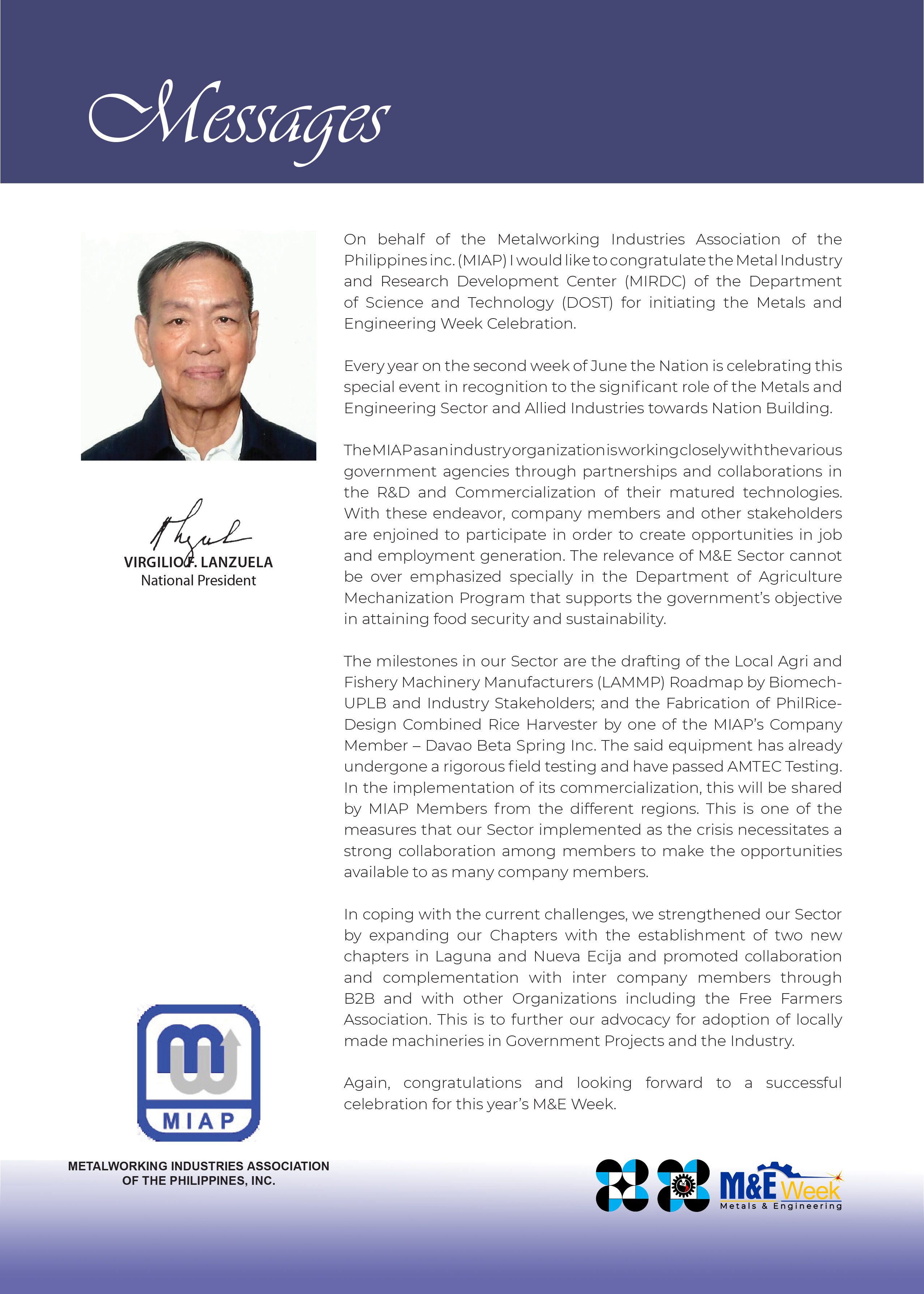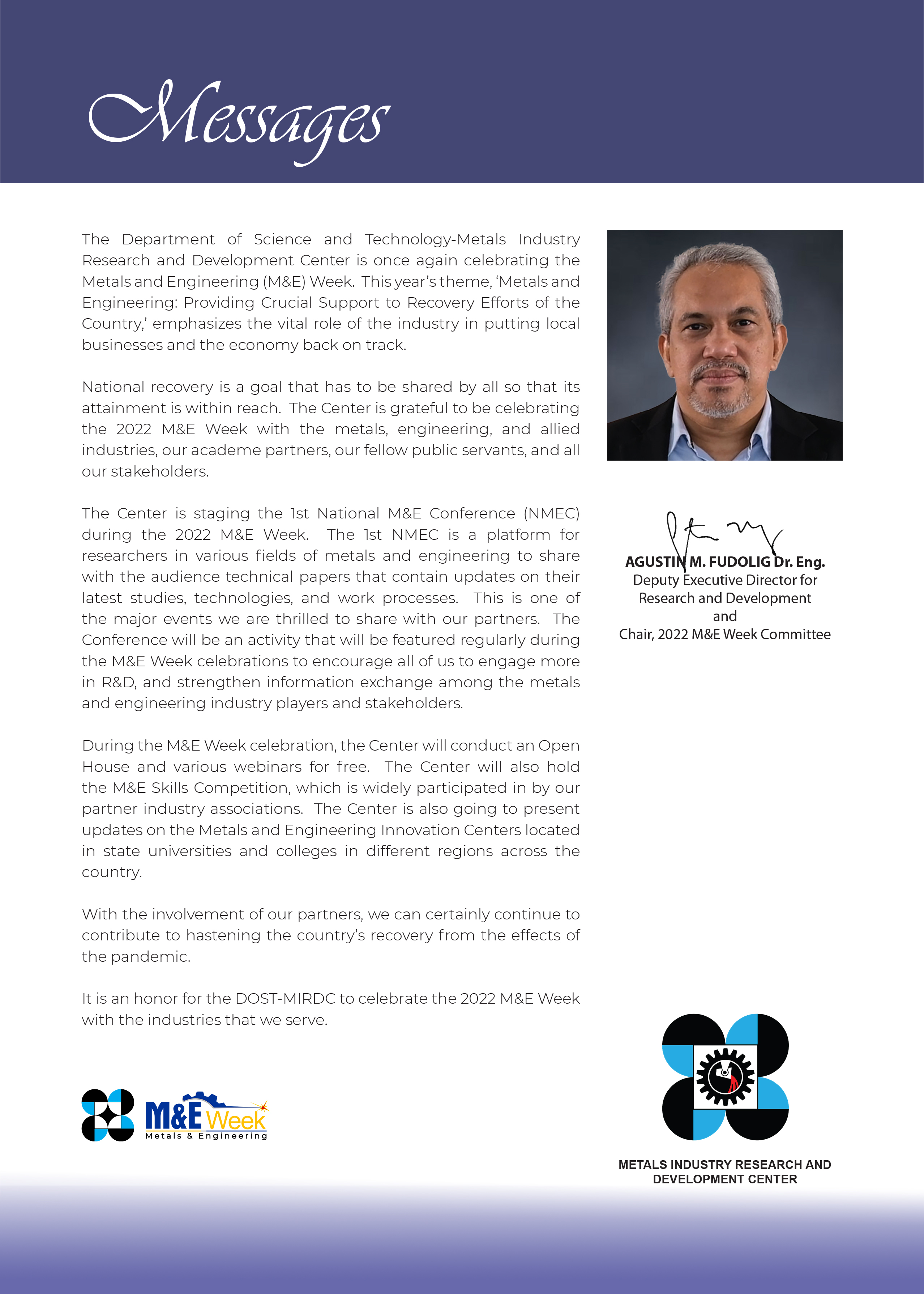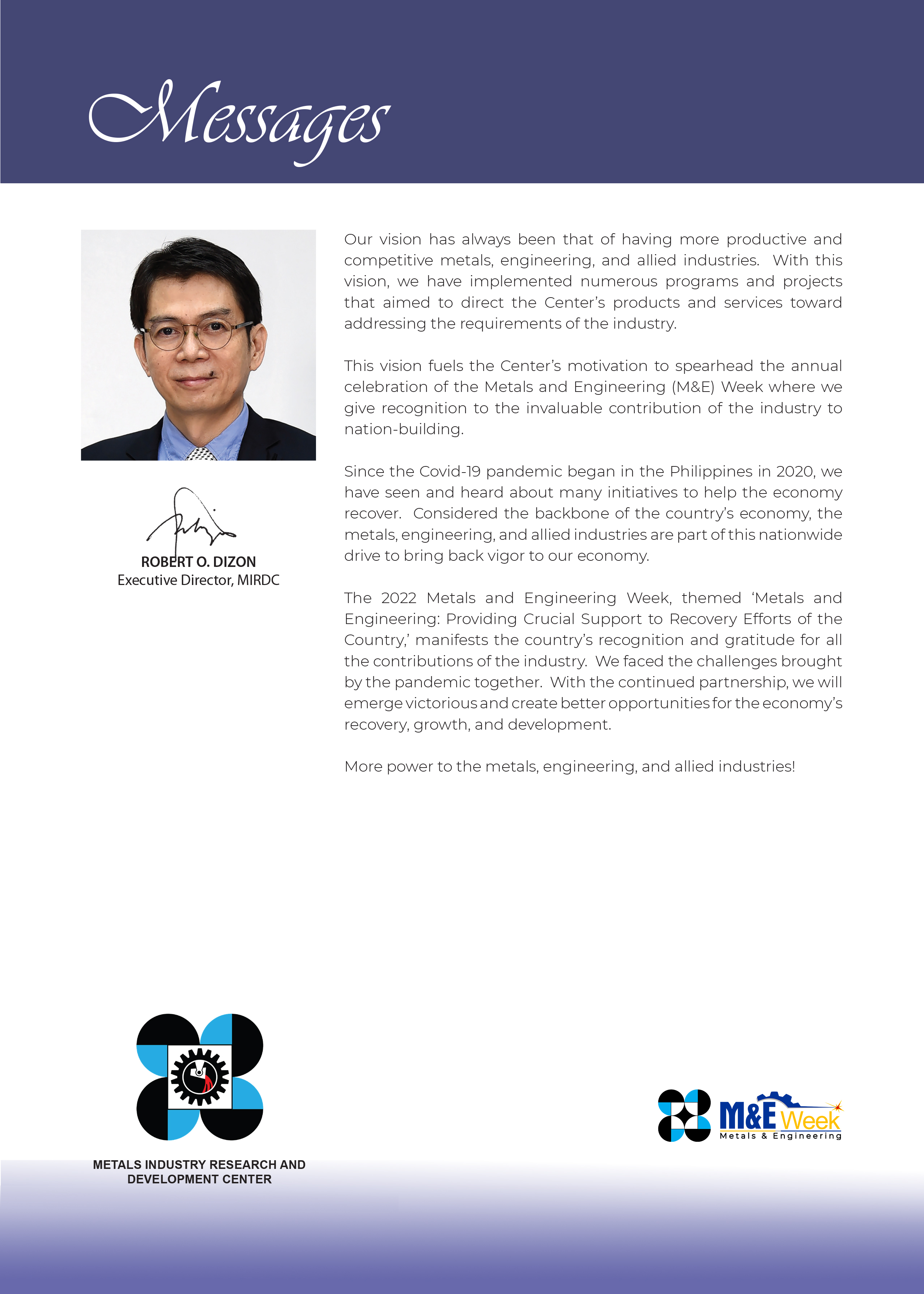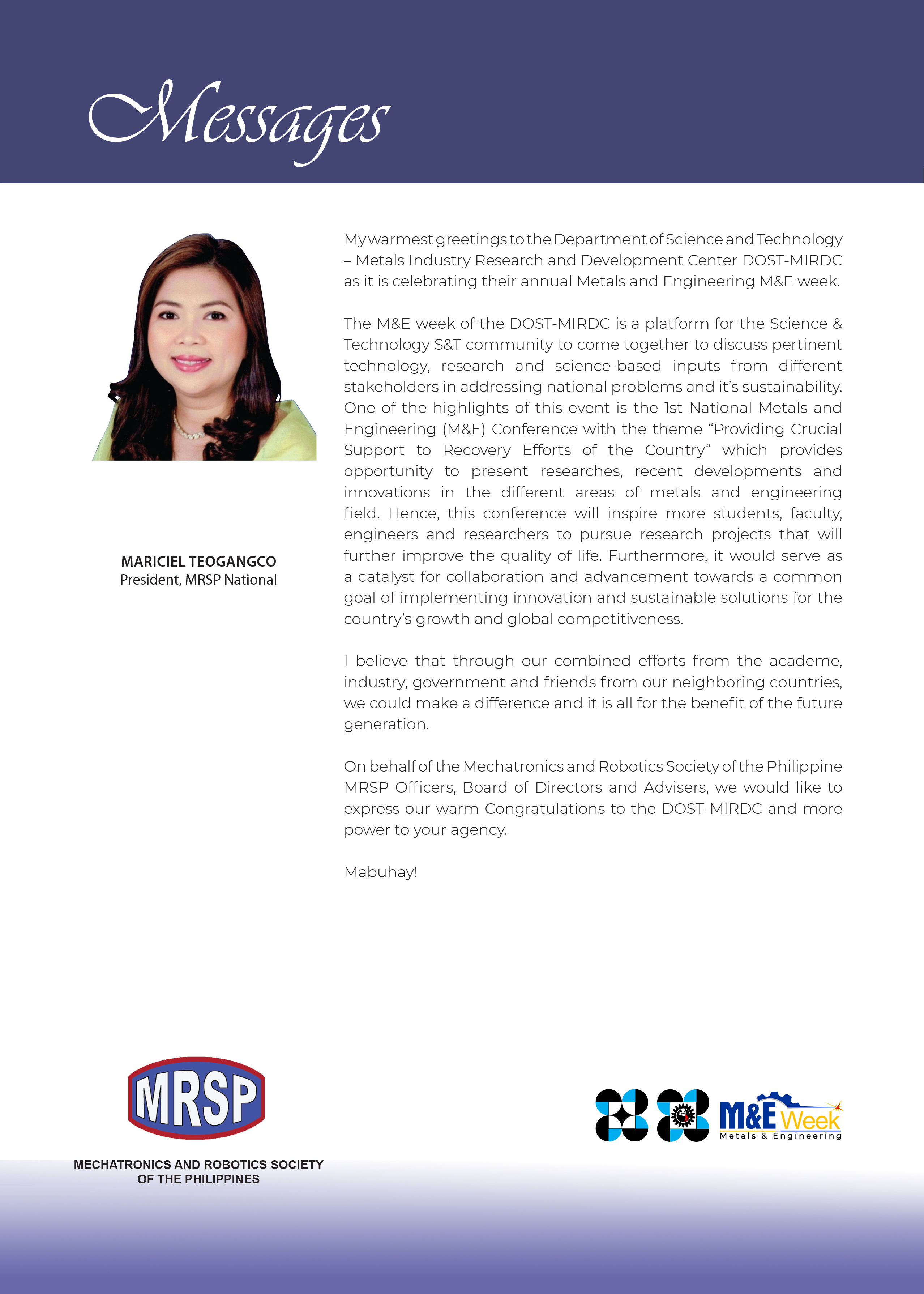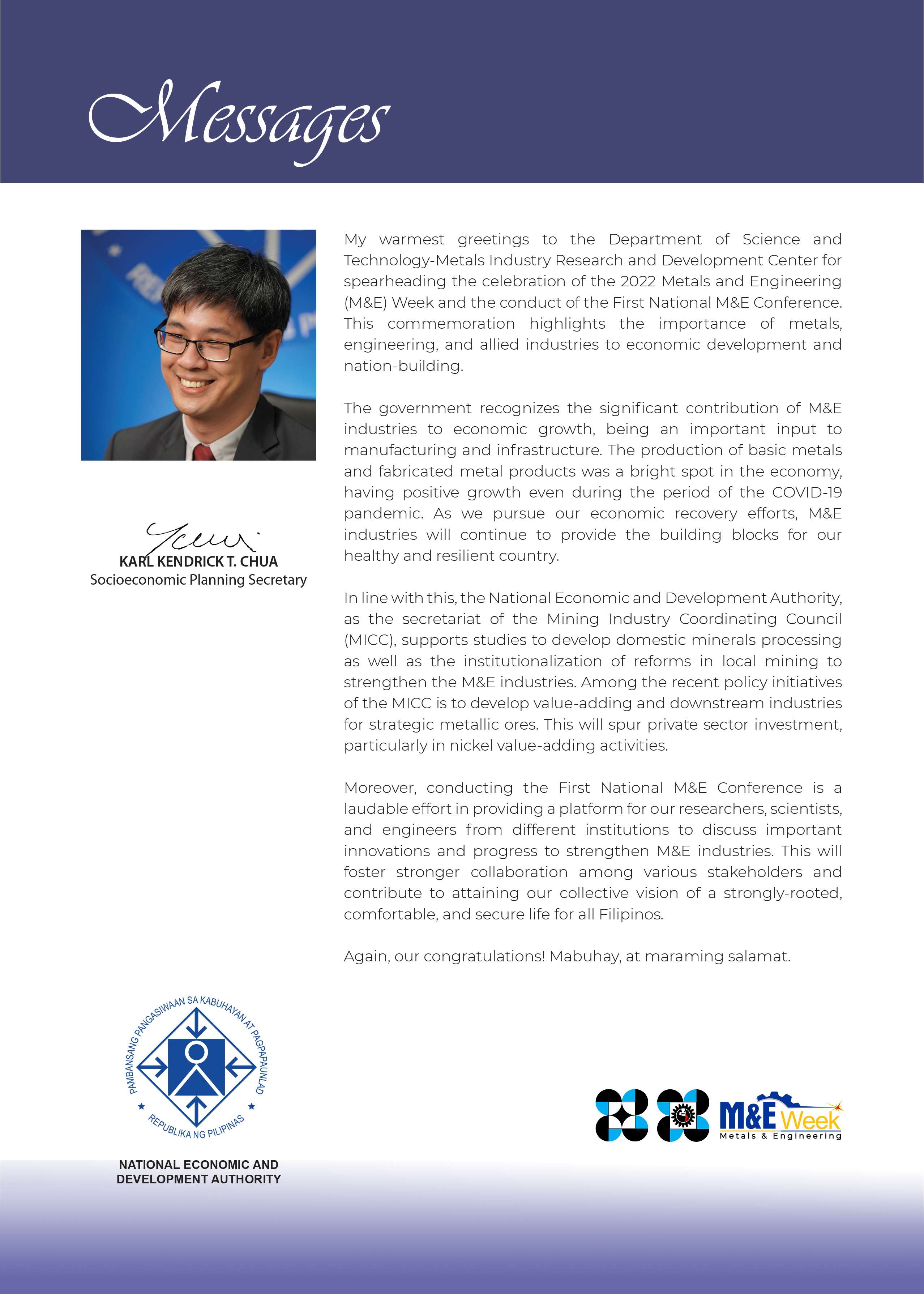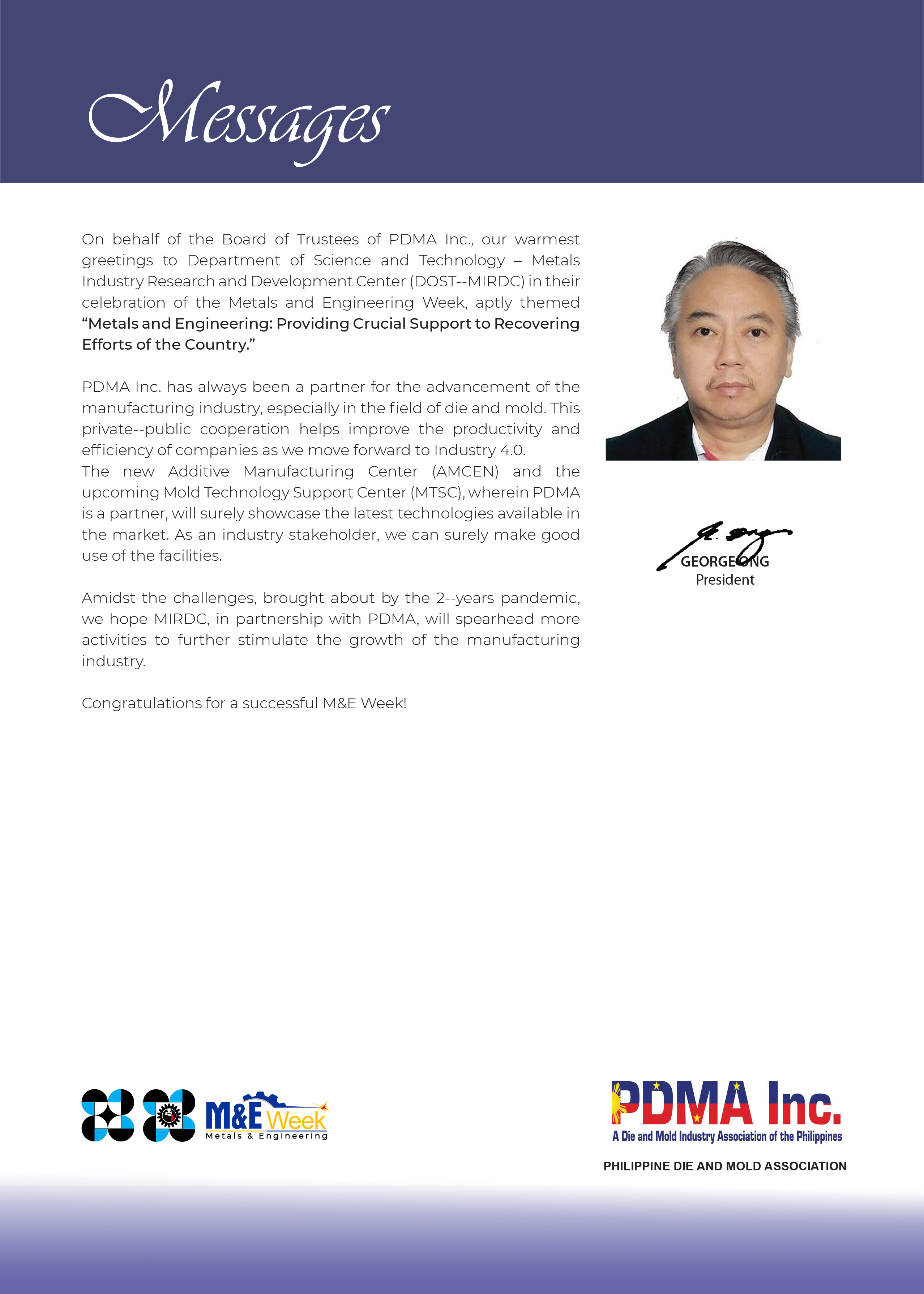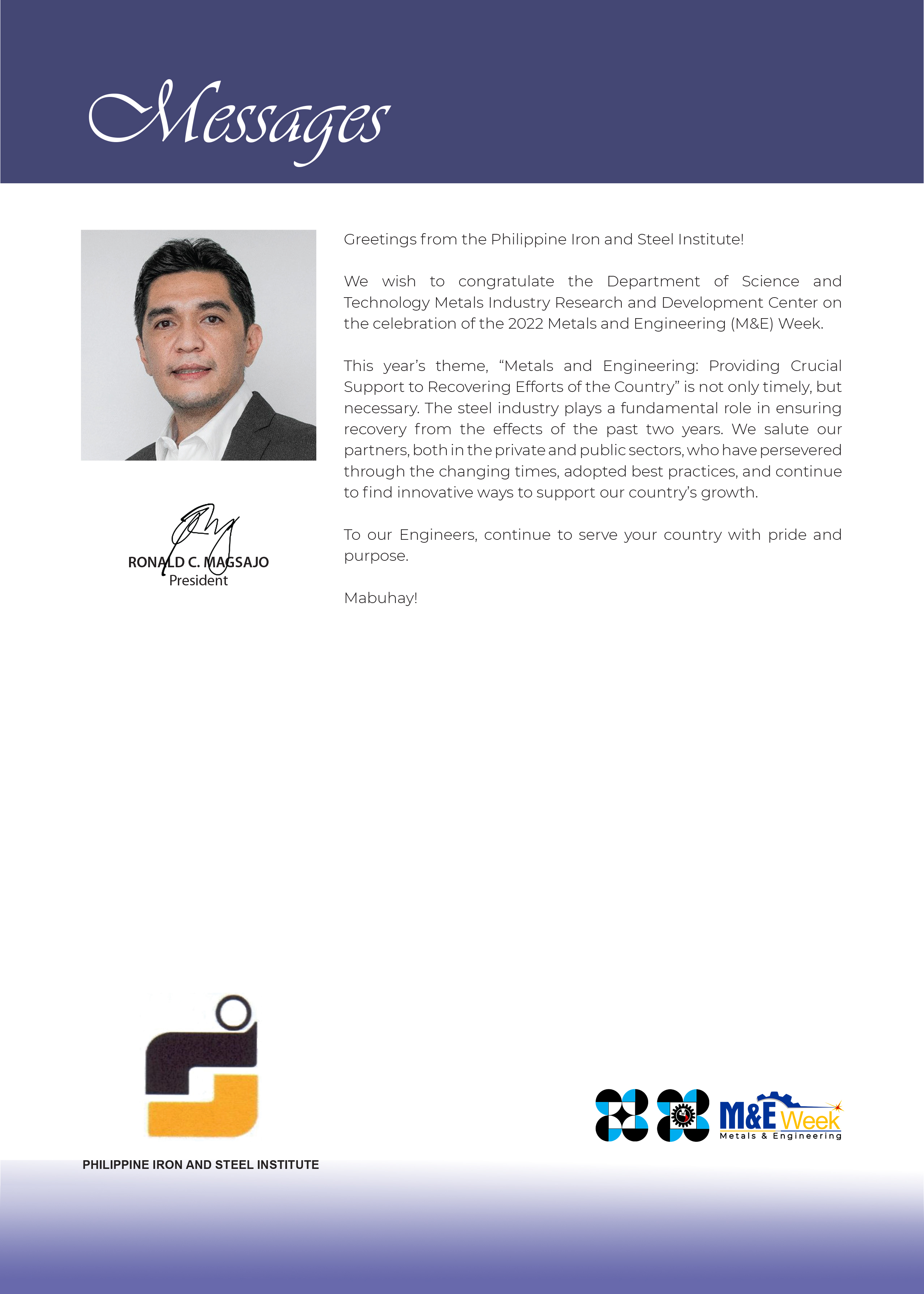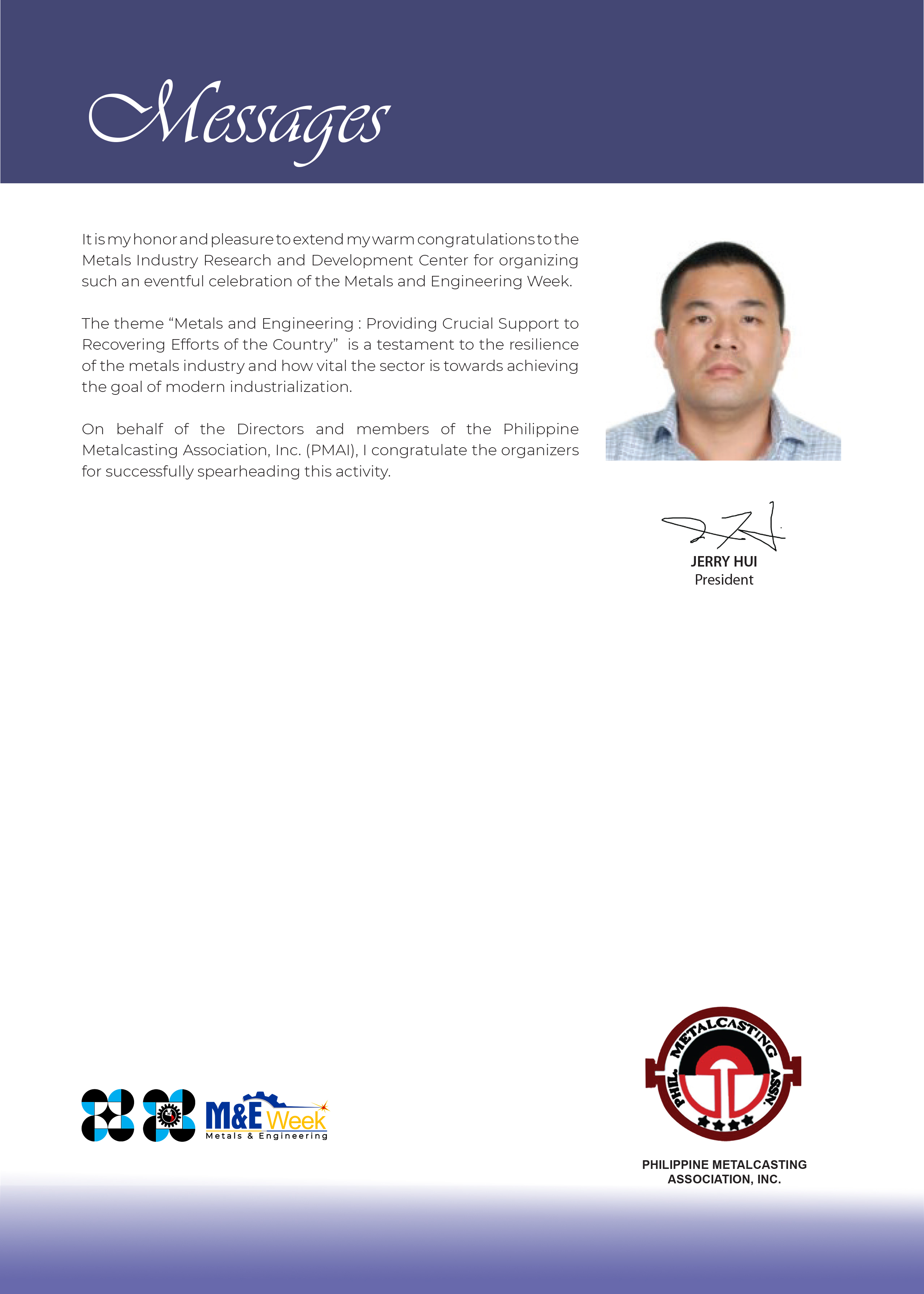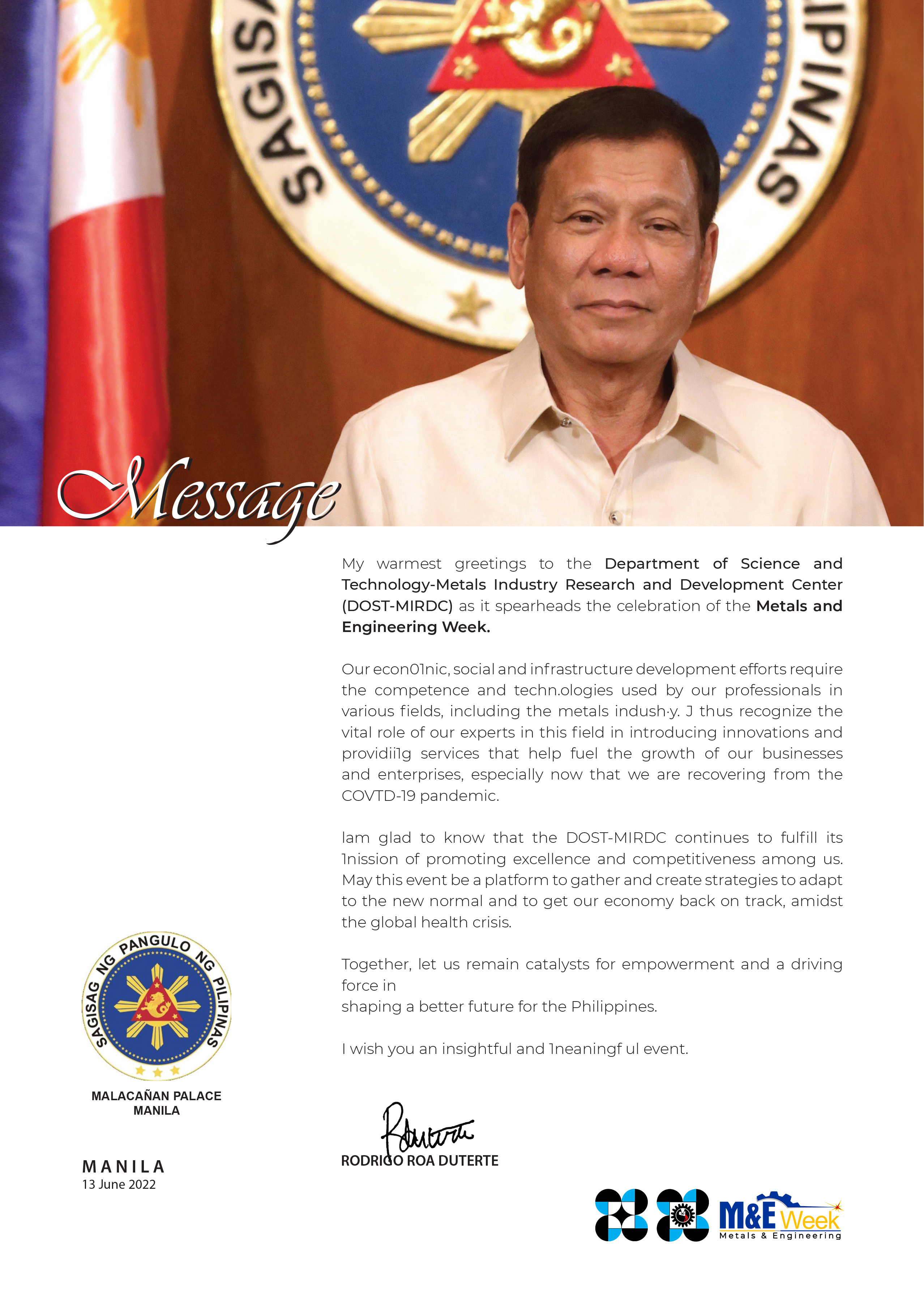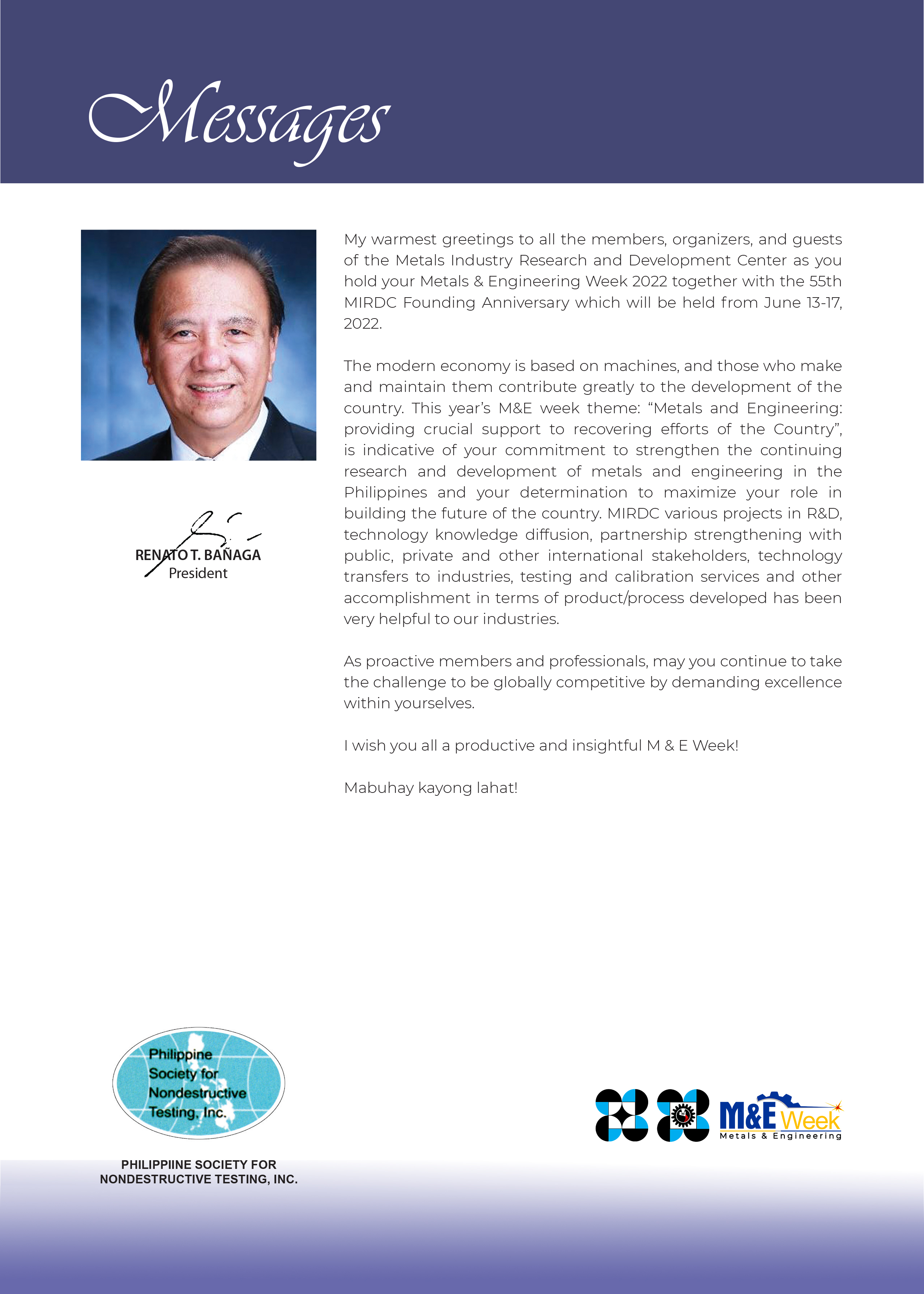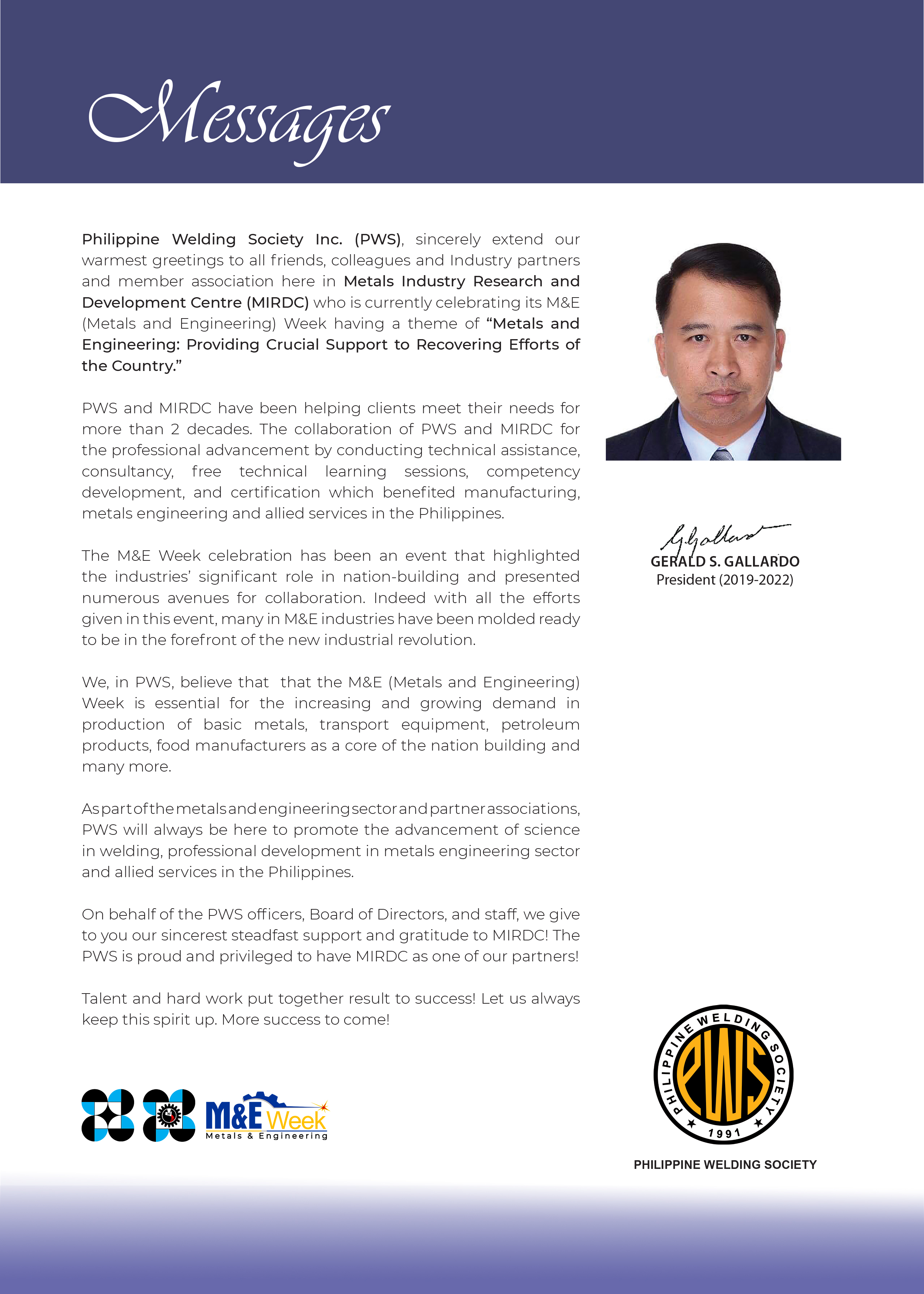DOST-MIRDC Celebrates its Academe Partners through ‘Usapang MEIC’
By Faith P. Macatangay
Taguig City, Metro Manila– The DOST-MIRDC continues to strengthen allies in support of its mandate of serving the metals, engineering, and allied industries. As part of its 56th founding anniversary and 14th Metals and Engineering Week, DOST-MIRDC held ‘Usapang MEIC’ on June 16, 2022.
‘Usapang MEIC’ gathered the Metals and Engineering Innovation Centers (MEIC) of CAR, Regions I, II, III, and X, and industry partners in an online forum to discuss the updates, research and development (R&D) projects, and plans of their respective areas.
Prior to the event, the project team conducted a market survey to determine the viability and potential market of the MEICs. Engr. Ma. Girlie M. Millo, member of the MEIC project and Chief of the DOST-MIRDC’s Technology Advisory and Business Development Section, reported that businesses in the metals and engineering industry are interested to use the MEIC facility since they are into production, manufacturing, and fabrication of new products. The potential MEIC users also recommend that the facility should focus on the R&D of industrial and post-harvest machineries and offer technical consultancy.
R&D Projects
One of the highlights of the program was the presentation of R&D projects of each MEIC focal person.
The Cordillera Administrative Region-MEIC in Ifugao State University (IFSU) shared their continuous design improvements of their ‘Portable Coconut Grater with Presser.’ The 2-in-1 technology is already being used by a local women's group in Poblacion West, Ifugao.
The other projects of CAR-MEIC (IFSU) are ‘Coconut Dehusker with Breaker’ and the ‘Portable Corn Mill.’
Ilocos Region-MEIC in Don Mariano Marcos Memorial State University (DMMMSU) meanwhile has an ongoing publication and patent application of their research on Electrocoagulation Reactor Unit for Waste Water.
The lack of existing local mechanical peanut harvesters is the problem that the Ilocos Region-MEIC (DMMMSU)’s second project ‘Self-Propelled Peanut Harvester’ aims to solve.
The ‘Fabrication of the High Impact Technology Solution (HITS) Equipment – Water Retort and Vacuum Fryer’ is the Cagayan Valley Region-MEIC in Cagayan State University’s (CSU) support to the CSU and DOST’s Food Innovation Center in Region II.
The R&D projects, which has two components namely conducting benchmarking in organizations both locally and abroad specifically in Taiwan and fabricating the upscaled version of the water retort and vacuum fryer, are also funded by the DOST Region I.
For future projects, Cagayan Valley Region-MEIC (CSU) will focus on production of specialized oils from fruit waste, specialized stirring tank, and machine and chopper.
The Central Luzon Region-MEIC in Nueva Ecija University of Science and Technology (NEUST) targets to develop three technologies: Cocopeat and Coco-Coir Extractor Machine, Water Hyacinth Press, and Onion Harvester.
The Central Luzon Region-MEIC (NEUST) is committed to complete not only the development of the mentioned projects but also to pursuing mass production.
Northern Mindanao-MEIC in University of Science and Technology of Southern Philippines (USTP) highlights their solution to the rapid fermentation of coconut sap with a threshold value of pH level 6– the ‘Cocosap Container.’ This food-grade container is capable of monitoring the pH level, temperature, and volume of coconut sap to ensure its quality.
Another Northern Mindanao-MEIC project on conversion of non-biodegradable plastic wastes into a quality bio-oil through the chemical degradation process of pyrolysis.
Open Forum
The industry and stakeholders gave their input concerning the improvement of MEICs and their R&D projects.
Dr. Julius Caesar V. Sicat, DOST Regional Office. No. 3 Regional Director, initiated the Open Forum as he applauded all the research papers presented.
He emphasized that the operation of MEICs should consider creating business opportunities, and promoting regional economic development because businesses are based on local demand. Dr. Sicat added that the aggressive participation of local private sectors and LGUs play an important role in the operation since they are an important source of local knowledge and likewise will be the beneficiaries.
The Japan International Cooperating Agency (JICA), a government agency that assists the economic and social growth of developing countries, has three recommendations for the economic development of micro, small, and medium enterprises (MSMEs): (1) production management that focuses on cost management, quality management, and delivery management particularly improvement of shop floor management, (2) acquisition of advanced technologies required by the leading industries as purchasers of parts and service, and (3) technician training on the above management and production technology.
Dr. Sicat congratulated DOST-MIRDC because the establishment of MEICs in the regions had already addressed JICA’s two out of three recommendations, namely, acquisition of advanced technologies, and technician training.
Mr. Virgilio F. Lanzuela, National President of the Metalworking Industry Association of the Philippines (MIAP), advised that the agricultural projects of MEICs should comply with the Agricultural Machinery Testing and Evaluation Center (AMTEC) standards. Mr. Lanzuela added that to upscale the presented projects, new technologies should be infused into them.
MIAP-Davao President, and Secretary of Mindanao Agricultural Machineries Industry Association (MAMIA), Ms. Andrea Marie Dizon, raised the suggestions that the innovation centers should be equipped with casting, die and mold facilities for mass production, and testing equipment, and the creation of a website for easy access of all stakeholders, among others.
MEIC Year 2 Project
The MEIC project is currently in its second year. Some of the target activities for the year are the completion of delivery, installation, and commissioning of various metalworking equipment; implementation of R&D projects; and conduct of technical training of faculties and researchers involved in MEIC.
Dr. Rowena Cristina L. Guevara is looking forward that the MEICs will be included in the list of future niche R&D centers. The DOST Undersecretary for Research and Development added that the establishment of MEICs in the remaining 10 regions is already in the agency’s pipeline.
To keep updated on the events and other collaborative R&D projects of the DOST-MIRDC, visit www.mirdc.dost.gov.ph and the DOST MIRDC Facebook page.
Screenshots from the 'Usapang MEIC'
Here is the registration link
https://bit.ly/Regs_F2F_VA-VE_8-4pm
Date: July 13-15, 2022
Time: 8:00am - 4:00pm
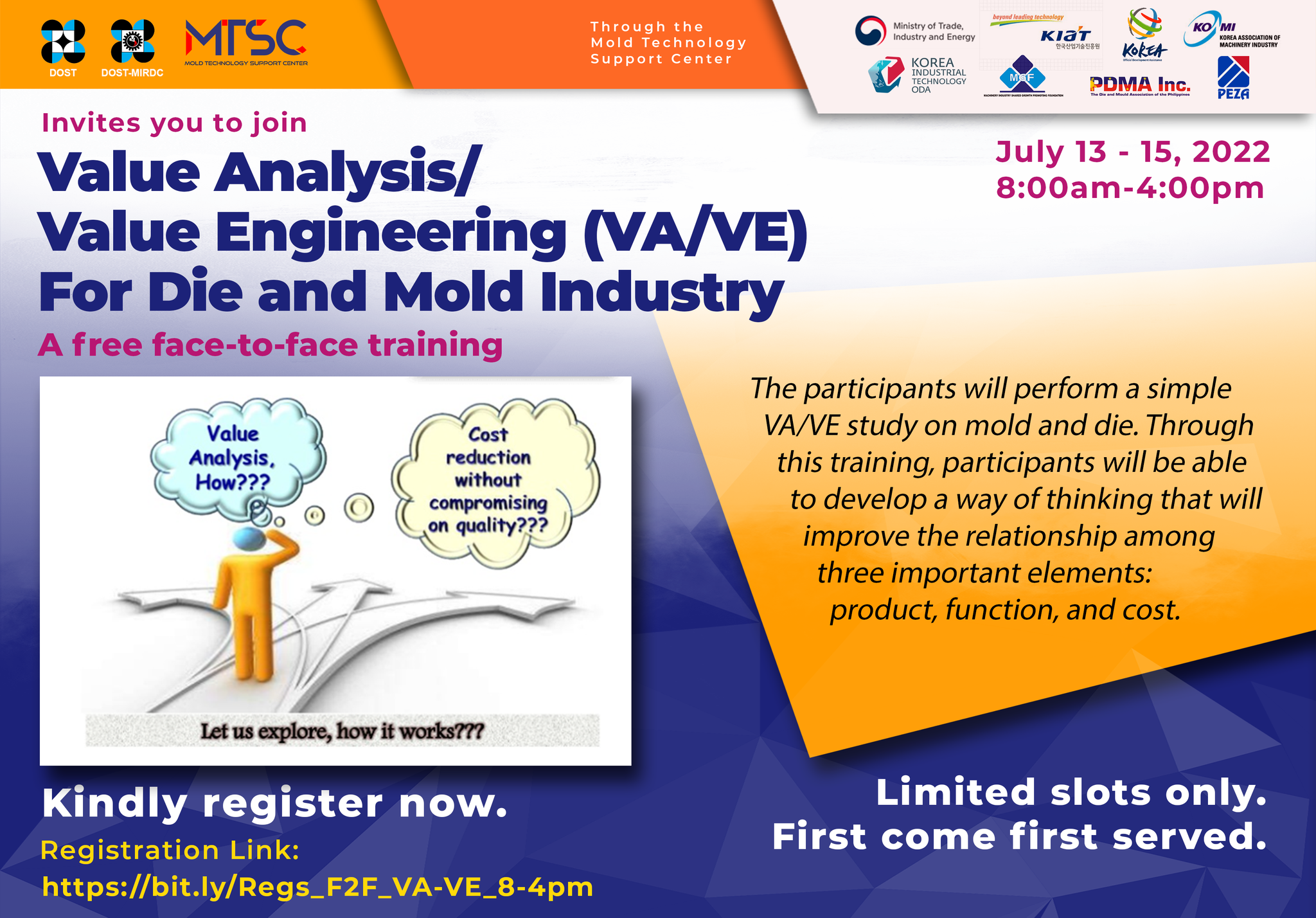
Click here for a downloadable PDF version of this article
MIRDC Welcomes Guests for the Open House
By: Jim Patrick S.D. Erispe
June 13, 2022 – Day 1 of the celebration of the 2022 Metals and Engineering (M&E) Week. The first day of the M&E Week was marked by one of its major activities – the Open House where the Metals Industry Research and Development Center (MIRDC) showcased the different facilities of the Center.
The goal of the Open House activity is to raise the stakeholders’ awareness of MIRDC's various technologies that assist the metals, engineering, and allied industries. Faculty members, students, and industry representatives are among those who have been invited.
Guests visited the different facilities of MIRDC. The following facilities are available for the open house event:
- Advanced Manufacturing Center (AMCEN)
- Advanced Mechatronics, Robotics, and Industrial Automation Laboratory (AMERIAL)
- Non-Destructive Testing Laboratory (NDT)
- Corrosion Laboratory
- Auto-Parts Laboratory
- Physical Metallurgy Laboratory
- Heat Treatment
- Surface Engineering
- Machine Shop
The open house activity will give participants a better understanding of the service and capabilities of MIRDC.
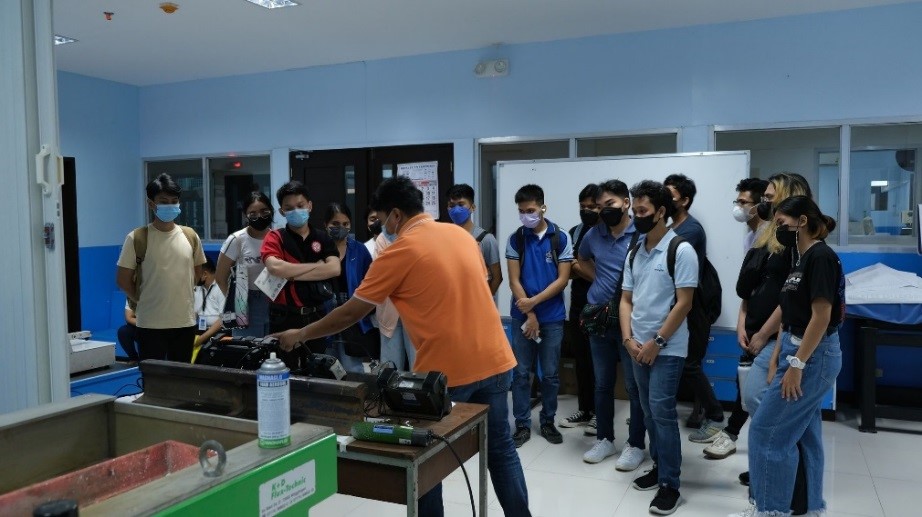
Open House participants attentively listen to an MIRDC expert at Non-Destructive Laboratory during the first day of Metals and Engineering Week 2022.
Here is the Registration Link.
https://bit.ly/F2F_Regs_Mold_Assembly_NX
Title: Mold Assembly Using NX
Date: June 29,30 - July 1, 2022
Time: 9:00AM-4:00PM
